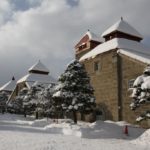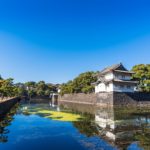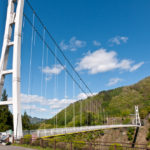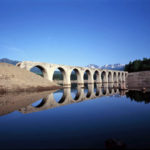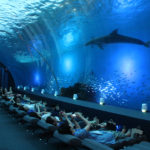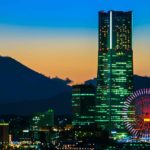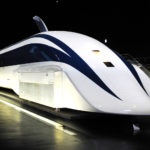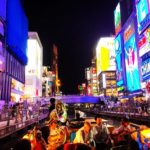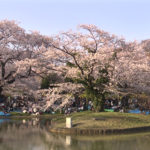A fashionable retro space you can feel the atmosphere of Scottish hometown of whiskey The "cool and humid climate" necessary for making whiskey, "being blessed with water", "being clear in the air", these conditions are all in the surplus. The Nikka Whiskey Hokkaido Factory is a fashionable retro space where you can feel the atmosphere of Scottish hometown of whiskey. Besides … [Read more...] about Nikka Whisky Yoichi Distillery, Hokkaido
Imperial Palace, Tokyo
The Imperial Palace is located in the former site of Edo Castle The Imperial Palace is the residence where the Emperor lives, in other words, the palace in Japan. The current Imperial Palace is located in Chiyoda Ward, Tokyo, and it is a course of jogging and walking for people living in the city as a place full of greenery and water. The place where the current Imperial … [Read more...] about Imperial Palace, Tokyo
Jigokudani Yaen-Koen (Wild Snow Monkey Park), Nagano
Japanese Maca is free to enter and leave "Jigokudani Yaen-Koen" (Wild Snow Monkey Park) in the Yokoyu-gawa River valley originated from Shiga-Kogen Plateau is located at the back of "Jigokudani-Onsen Hot Spring Town", that is 850 meters in altitude, with over 1 meter of snow in winter, lowest temperature of -10 degrees. Although it is partitioned as a facility, there is no … [Read more...] about Jigokudani Yaen-Koen (Wild Snow Monkey Park), Nagano
Ueno Sky Bridge, Gunma
One of Japan's leading suspension bridges "Ueno Sky Bridge" is a suspension bridge dedicated to pedestrians in Ueno Mura, Gumma Prefecture. The Ueno Sky Bridge, 225 meters long connecting "Kawawa nature parks" and "Forest of Mahoba," is one of Japan's leading suspension bridges. Also, from the Ueno Sky Bridge, which is 90 meters high, you can see the beautiful mountain scenery … [Read more...] about Ueno Sky Bridge, Gunma
Taushubetsu River Bridge, Hokkaido
Concrete arch bridge's appearance reflected on the lake surface is very beautiful "Taushubetsu River Bridge" is a bridge located in Nukabira Lake in Kamishihoro Town, Hokkaido, and it appears only for a limited season. "Taushubetsu" means Ainu language "a river with birch trees". "Taushubetsu River Bridge" is a concrete arch bridge on the former Japanese National Railway … [Read more...] about Taushubetsu River Bridge, Hokkaido
Yokohama Hakkeijima Sea Paradise, Kanagawa
Amusement park composed of aquariums, attractions, shopping malls, hotels, marinas, etc. "Yokohama Hakkeijima Sea Paradise" is a complex amusement park composed of aquariums, attractions, shopping malls, hotels, marinas, etc. located in Hakkeijima Island in Yokohama City, Kanagawa Prefecture. It was opened in 1993. It is a popular facility visited by more than 3 million users … [Read more...] about Yokohama Hakkeijima Sea Paradise, Kanagawa
Yokohama Landmark Tower, Kanagawa
You can see a 360-degree large panorama under your eyes A skyscraper with 70 floors above ground and 296 meters high, "Yokohama Landmark Tower" is a symbolic presence in Yokohama. It is a facility centered on the high-rise tower, offices, hotels, and shopping malls. Various facilities such as a prospective floor, multipurpose hall, and plaza restored and used the dock of the … [Read more...] about Yokohama Landmark Tower, Kanagawa
SCMAGLEV and Railway Park, Aichi
It will be surprising that it is very realistically expressed. "SCMAGLEV and Railway Park" in Aichi Prefecture, popular as a railway museum. There are exhibits of successive trains and SCMAGLEV (Superconducting Magnetic Levitation Railway), which you can actually ride. Also, you can simulate a world of 500 kilometers per hour with linear speed. Besides, the largest train … [Read more...] about SCMAGLEV and Railway Park, Aichi
Osaka Namba (Minami), Osaka
Plentiful gourmet and shopping from sightseeing spots Namba area around Shinsaibashi from Dotonbori in Osaka is called "minami" locally. It is a famous downtown area in Osaka, where you can enjoy plentiful gourmet and shopping from sightseeing spots. The northern part of Namba Station, the city of ornate neon spreading all over the Dotonbori River in Osaka's grand … [Read more...] about Osaka Namba (Minami), Osaka
Yoyogi Park, Tokyo
Enjoy the natural scenery transitions from season to season Yoyogi Park is the fifth-largest in the metropolitan park in Tokyo's 23 wards. Before the war, it was an army facility. After the war, it became a dormitory site of the US military; in the Tokyo Olympic Games, it was used as an athlete village and opened as a park in 1967. In the vast park of 540,000 square meters, … [Read more...] about Yoyogi Park, Tokyo
